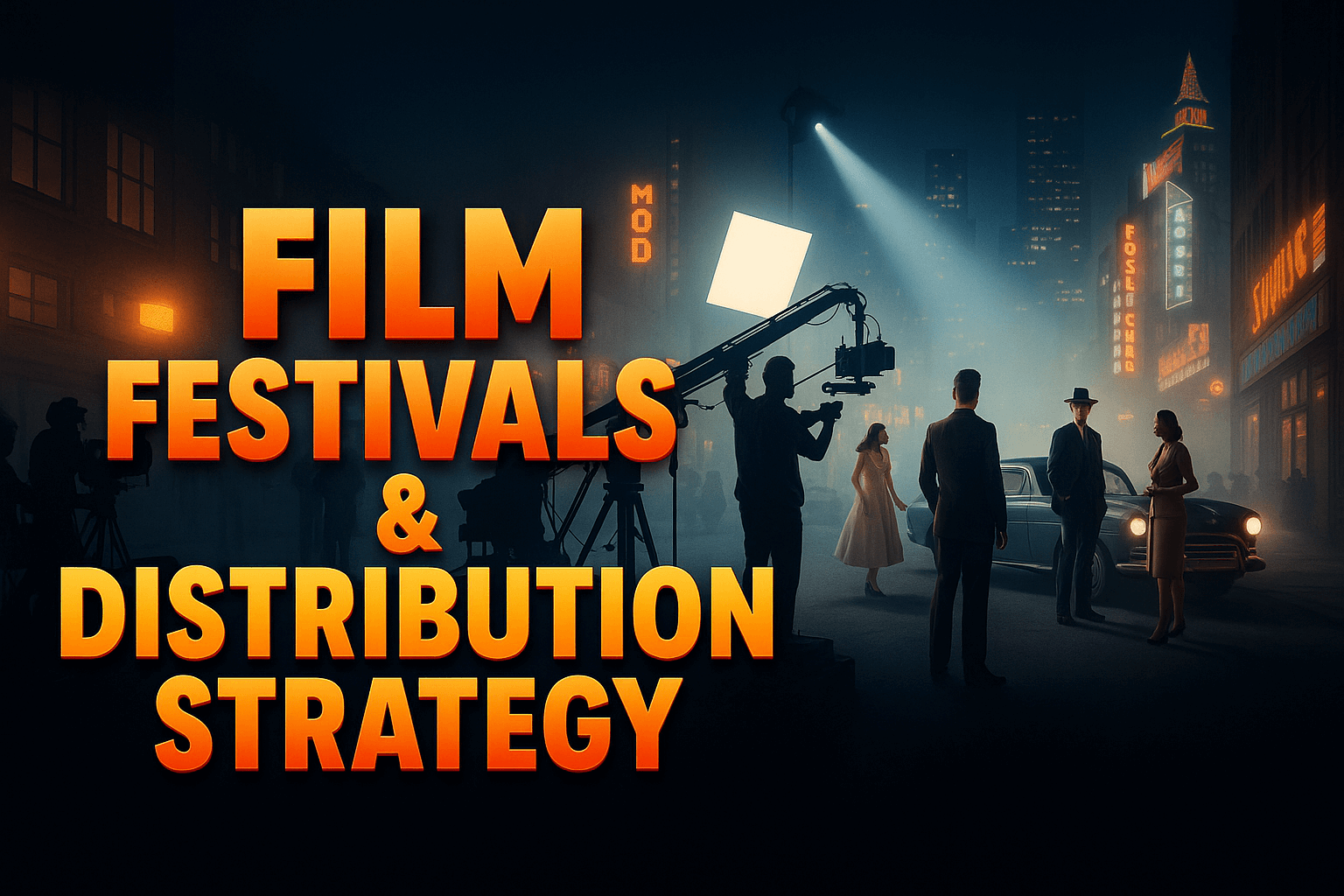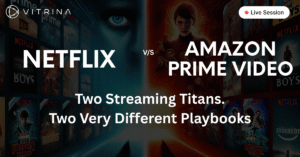Film Festivals & Distribution Strategy: A Guide to Using a Planning Platform

Introduction
In today’s fragmented media landscape, leveraging the festival circuit is more than a tradition—it’s a high-stakes component of a successful launch. A well-executed festival run can create critical buzz, secure lucrative sales, and position a project for awards season.
However, the core challenge lies in managing the immense logistical complexity and fragmented data of a global strategy. The strategic solution requires implementing a data-driven framework that uses a dedicated platform to manage outreach and track results.
For executives overseeing global portfolios, a coherent film festivals, distribution strategy, and planning platform is no longer a luxury but a necessity for transforming chaotic submissions into a data-driven, strategic rollout.
This guide outlines a framework for integrating festivals into your broader commercial goals and explains how a centralized platform like Vitrina, which provides intelligence to discover partners and track projects, is the key to executing it effectively.
Table of content
- The Evolving Role of Film Festivals in a Modern Distribution Strategy
- The Core Challenge: Managing the Complexity of a Global Festival Strategy
- Building a Strategic Framework for Your Festival Run
- The Solution: Leveraging a Planning Platform for Your Film Festival Distribution Strategy
- How Vitrina Powers Your Festival and Distribution Planning
- Conclusion: From Chaos to Control
- Frequently Asked Questions
Key Takeaways
| Core Challenge | The operational complexity and fragmented data of a global festival strategy lead to missed deadlines, inefficient scouting, and a failure to maximize commercial potential. |
| Strategic Solution | Adopt a data-driven framework that centralizes market intelligence, partner vetting, and real-time project tracking. |
| Vitrina’s Role | Vitrina provides the essential intelligence layer to discover and vet the right distribution partners and sales agents and track the competitive landscape. |
The Evolving Role of Film Festivals in a Modern Distribution Strategy
For decades, film festivals were primarily seen as discovery venues—a place for auteurs to be unearthed and for distributors to find the next hidden gem. While that element of discovery remains, their role in a modern distribution strategy has evolved significantly. Today, a festival premiere is a calculated strategic move designed to achieve specific business outcomes far beyond a simple screening.
In an era of content saturation, festivals provide a curated platform to break through the noise. A premiere at a top-tier event like Cannes, TIFF, or Sundance acts as a powerful market signal, validating a film’s quality and commercial potential for buyers, press, and future audiences.
This “stamp of approval” is often the first and most critical step in a film’s journey, influencing everything from international sales prospects to its eventual awards campaign.
Furthermore, the festival circuit now functions as a crucial B2B marketplace. Events like the Berlinale’s European Film Market (EFM) or the Marché du Film at Cannes are less about the public screenings and more about the backroom deals.
They are centralized hubs where producers, sales agents, and acquisition executives converge to finance, buy, and sell content. A successful festival presence is therefore not just an artistic debut but a critical phase of global content licensing and independent film distribution.
It’s the first domino to fall in a long and complex commercial chain that includes theatrical runs, streaming rights, and international territory sales.
The Core Challenge: Managing the Complexity of a Global Festival Strategy
While the strategic importance of festivals is clear, the operational reality of managing a global festival run is one of immense complexity. With over 3,000 international feature film festivals taking place annually according to the British Film Institute, the sheer scale of the landscape is daunting.
The process quickly becomes a logistical nightmare defined by information overload, as each festival has unique submission requirements, deadlines, and contacts that are prone to error when tracked manually.
This is compounded by the challenge of asset management, where coordinating the creation and delivery of specific screeners, press kits, and marketing materials becomes a significant project in itself.
Furthermore, crucial relationship data with programmers and buyers often remains siloed in personal inboxes, preventing team-wide visibility. At a strategic level, planning the tiered rollout of premieres—a critical factor for eligibility—is nearly impossible without a holistic view of the global circuit.
This operational chaos directly impacts business outcomes, leading to missed opportunities and a failure to maximize a film’s commercial potential. This highlights one of the major pain points in the entertainment supply chain.
Building a Strategic Framework for Your Festival Run
To cut through the complexity, you need to move from an ad-hoc submission process to a structured, strategic framework. This involves defining your objectives upfront and using data to guide your decisions. An effective framework is built on three pillars: defining clear goals, tiering festivals for impact, and overcoming the data disconnect.
Defining Clear Objectives
Not every film goes to a festival with the same goal. Before submitting to a single event, you must define what success looks like for your specific project.
Is the primary goal to secure a lucrative North American distribution deal? Is it to generate awards buzz to attract top talent for future projects?
Or is it to build a strong press portfolio to support an international sales campaign? Your objective will dictate your entire strategy, from the type of festivals you target to the marketing message you craft.
Tiering Festivals for Maximum Impact
With clear goals, you can begin to tier festivals based on their ability to help you achieve them. This goes beyond a simple “A-list” classification into a more nuanced strategic plan.
Top-tier premieres at events like Cannes, Venice, or Sundance are reserved for launching films with the highest commercial or awards potential, offering maximum press visibility.
Major market festivals, such as Berlinale with its European Film Market, are ideal for projects with strong international sales prospects where the co-located market is the main focus.
For genre films, specialized events like Sitges or Fantasia provide direct access to a dedicated fanbase and distributors, where a category win can be more impactful than a sidebar screening at a larger festival. Finally, regional and national festivals are crucial for qualifying for local awards and securing distribution in specific, valuable territories.
The Data Disconnect: Why Spreadsheets Fail
Executing a tiered strategy requires robust data management. A spreadsheet can track deadlines, but it cannot provide strategic intelligence. It cannot map the relationships between distributors and the types of films they acquire at specific festivals.
It cannot offer real-time updates on which acquisition executives have moved to new companies. This data disconnect is where most strategies break down, as teams are forced to make critical decisions based on incomplete or outdated information. This is precisely why a dedicated film festival distribution strategy planning platform is essential.
The Solution: Leveraging a Planning Platform for Your Film Festival Distribution Strategy
The strategic framework clarifies what you need to do. A planning platform provides the tools for how you do it. By centralizing data, streamlining workflows, and providing market intelligence, a dedicated platform transforms your festival strategy from a reactive, administrative task into a proactive, data-driven business function. It addresses the core challenges of complexity and data fragmentation head-on.
Centralized Intelligence
Instead of hunting through disparate websites, databases, and contacts lists, a platform consolidates all essential information into a single, searchable interface. You can identify which festivals align with your genre, track submission windows, and see historical data on what kinds of films perform well at each event.
This allows for more informed and strategic decision-making, ensuring you invest your time and resources on the festivals that offer the highest potential ROI for your specific project.
Streamlined Outreach and Partner Discovery
A key function of a planning platform is to connect your project to the right people. An advanced platform will include a verified database of industry contacts, allowing you to identify and contact festival programmers, film sales agents, and acquisition executives directly.
More importantly, it allows you to map the entertainment ecosystem, understanding which distributors are active at which festivals and what kinds of content they are looking for. This moves your outreach from cold calls to targeted, intelligence-led engagement. A robust distribution and licensing strategy depends on this level of precision.
Real-Time Market Tracking
The entertainment industry is dynamic. Executives move, companies merge, and strategies shift. A planning platform with real-time tracking capabilities, like a project tracker, ensures you are working with the most current information.
You can monitor which distributors are acquiring films similar to yours, track the festival performance of competing projects, and get alerts on new partnership opportunities.
This real-time visibility allows you to adapt your strategy on the fly, responding to market trends as they happen rather than after the fact.
How Vitrina Powers Your Festival and Distribution Planning
Executing a sophisticated, global film festival strategy requires more than just a list of deadlines; it demands comprehensive market intelligence. Vitrina is the platform that provides this critical layer of data, empowering executives to make smarter, faster, and more profitable decisions.
While not a submission portal, Vitrina is the strategic engine that powers your entire planning process. Our platform helps you build and execute your film festivals distribution strategy by providing a unified view of the global entertainment supply chain.
Vitrina’s power lies in allowing you to identify the right partners before you even select a festival; you can vet distributors, analyze their acquisitions, and access verified contacts.
This is complemented by the ability to track the competitive landscape using the Vitrina Project Tracker, which lets you monitor comparable films through their entire lifecycle.
This gives you invaluable intelligence for positioning your own film. Finally, the platform provides in-depth company intelligence, offering detailed profiles on potential partners so you can tailor your pitch and approach the right decision-makers, dramatically increasing your efficiency and success rate.
Conclusion: From Chaos to Control
Film festivals remain a cornerstone of a successful film’s journey, but their strategic complexity demands a modern approach. Relying on outdated tools like spreadsheets and static contact lists is no longer a viable option in a fast-moving global market.
This method actively invites risk, leads to missed deadlines, and fails to capitalize on the rich data landscape of the entertainment industry.
By implementing a strategic framework and leveraging a dedicated film festivals, distribution strategy, and planning platform, you can move from chaos to control.
A centralized intelligence solution like Vitrina provides the visibility and data needed to identify the right partners, track the competitive environment, and engage with the market from a position of strength.
This transforms your festival strategy from a series of hopeful submissions into a calculated, data-driven plan designed to achieve measurable business success and maximize the global commercial potential of every project in your portfolio.
Frequently Asked Questions
Their primary role has evolved from pure discovery to serving as a strategic launchpad. Festivals are now used to generate critical press and industry buzz, validate a film’s quality, create a competitive bidding environment among buyers, and serve as a crucial B2B marketplace for securing international sales and distribution deals.
Choosing the right festivals depends entirely on your project’s specific goals. You should tier festivals based on strategic value: top-tier festivals for awards potential and major sales, market-focused festivals for international deals, and niche/genre festivals to connect with a dedicated audience and specialized distributors.
While not strictly required, having an experienced sales agent is highly advantageous, especially for top-tier festivals. They have established relationships with festival programmers and acquisition executives, and they can craft a sophisticated global sales strategy. However, many filmmakers successfully navigate smaller or niche festivals independently before attaching a sales agent.
A planning platform helps by centralizing the vast amount of data required to manage a festival run. It allows you to track deadlines, manage assets, identify the right festivals for your genre, and discover and vet potential distribution partners and sales agents. It transforms the process from a logistical headache into a streamlined, data-driven strategy.















































